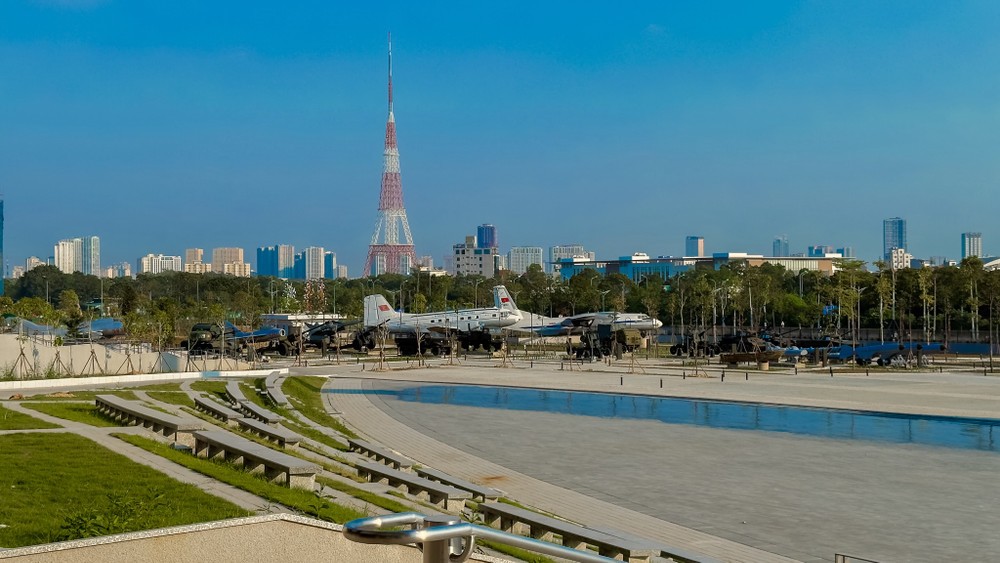Introduction
The Vietnam Military History Museum is a significant cultural landmark that showcases the strength and resilience of the Vietnam People’s Army throughout the nation’s history. Officially opened on November 1, 2024, this museum has quickly become a must-visit destination for those interested in understanding the rich and tumultuous history of Vietnam. With an expansive area of 386,600 m², the museum not only displays historical artifacts but also offers an interactive and immersive experience for visitors.
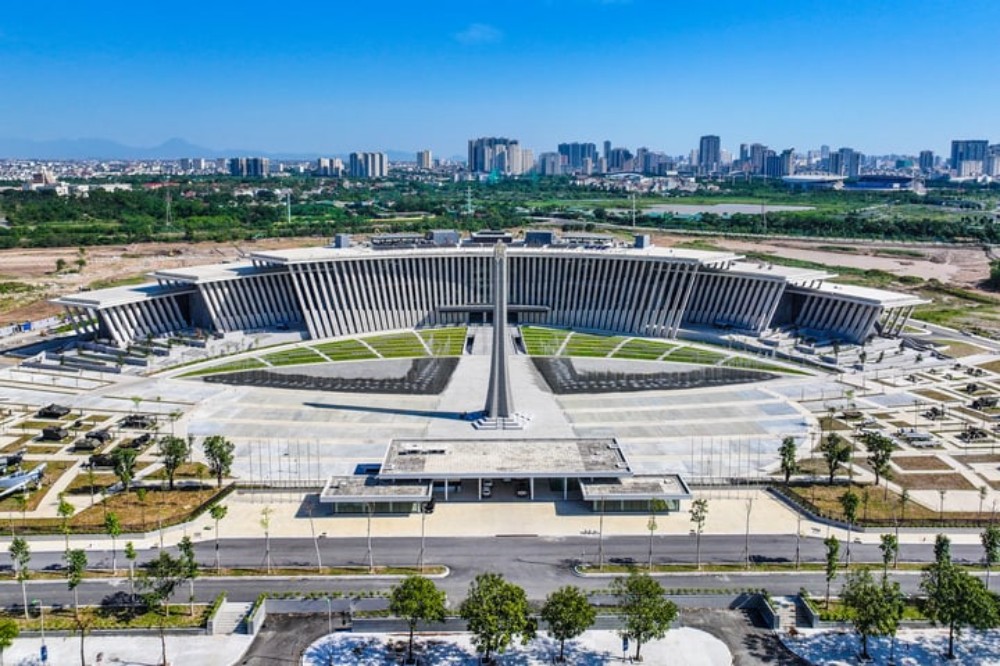
Location
The Vietnam Military History Museum is located at Km 6+500, Dai Lo Thang Long, Tay Mo Ward, Dai Mo, Nam Tu Liem District, Hanoi. Its strategic location makes it easily accessible from various parts of the city, allowing visitors to conveniently explore this historical site.
Google Map: Location
How to get there?
Reaching the Vietnam Military History Museum is straightforward and convenient. Visitors can choose from several transportation options:
- Personal Vehicles: You can take the Láng – Hòa Lạc highway from central Hanoi and then turn on Dai Lo Thang Long.
- Public Transport: For a more economical option, several bus routes stop near the museum. Notable routes include:
- Route 71B (Mỹ Đình Bus Station – Xuân Mai)
- Route 74 (Mỹ Đình Bus Station – Xuân Khanh)
- Route 87 (Mỹ Đình Bus Station – Quốc Oai – Xuân Mai)
- Route 88 (Mỹ Đình Bus Station – Hòa Lạc – Xuân Mai)
- Route 107 (Kim Mã – Làng Văn hóa du lịch các dân tộc Việt Nam)
Ticket price for the Vietnam Military History Museum
| Category | Ticket Price |
|---|---|
| Adult Ticket | 20,000 VND/person |
| Child Ticket (Under 16) | 10,000 VND/person |
| Senior Ticket | 10,000 VND/person |
| Children under 6 years old | Free |
Significance of the Museum
The Vietnam Military History Museum serves as a repository of historical artifacts and a powerful educational platform. It instills a sense of pride and patriotism in visitors, especially the younger generation, by recounting the sacrifices made for independence and freedom. The museum emphasizes the values of peace and unity, reflecting the collective aspirations of the Vietnamese people.
Symbol of Peace
In addition to highlighting Vietnam’s tumultuous history, the museum underscores the importance of peace. The outdoor exhibition area features a poignant symbol of peace, showcasing branches, green shoots, and doves rising from the wreckage of a B52 aircraft. This artistic representation embodies Vietnam’s desire for harmony with nations around the world.
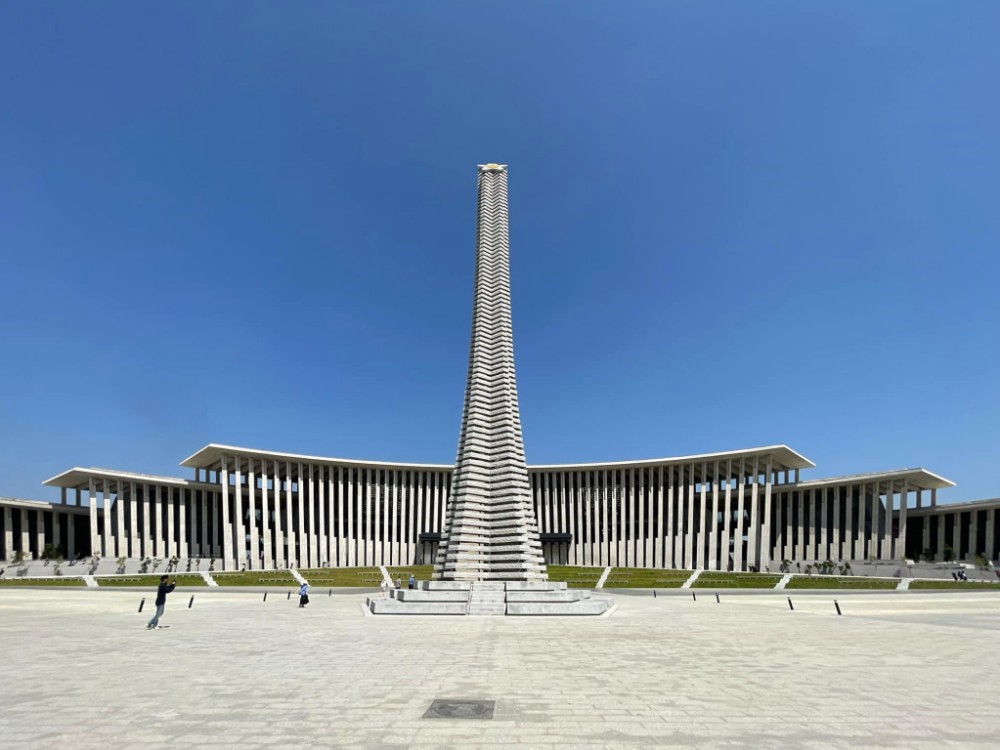
The Museum’s Space
1. Architectural Marvel
The museum is a stunning architectural feat, designed with a focus on the concept of “Sky, Earth, and Sea.” The main building stands at 35.8 meters tall, while the Victory Tower reaches an impressive height of 45 meters.
- Victory Tower: The tower’s peak is angled at 60 degrees, forming a five-pointed star that symbolizes the year 1945, when Vietnam gained independence. The pentagonal base represents the five classes of socialist society, reflecting the unity and solidarity of the Vietnamese people.
2. Outdoor Exhibition Area
One of the most captivating aspects of the museum is its outdoor exhibition area, which displays numerous large military artifacts that showcase the strength of the Vietnam People’s Army during the wars against the French and Americans.
- Military Artifacts: Visitors can view a variety of military equipment, including:
- 85mm artillery
- PT67 tank, serial number 555
- MiG-17 aircraft, serial number 2047
- Artifacts from Adversaries: The outdoor area also features weapons and equipment used by French and American forces during the wars, such as the M-107 self-propelled howitzer—nicknamed the “king of the battlefield.” Visitors can also see various aircraft, including the A37, CH47, F5E, and C130, along with numerous types of bombs and munitions.
- Symbol of the Desire for Peace: A striking installation in the outdoor area symbolizes the hope for peace, with branches, green shoots, and doves rising from the remnants of a B52 aircraft. This artwork conveys Vietnam’s commitment to peace and its aspirations for global harmony.
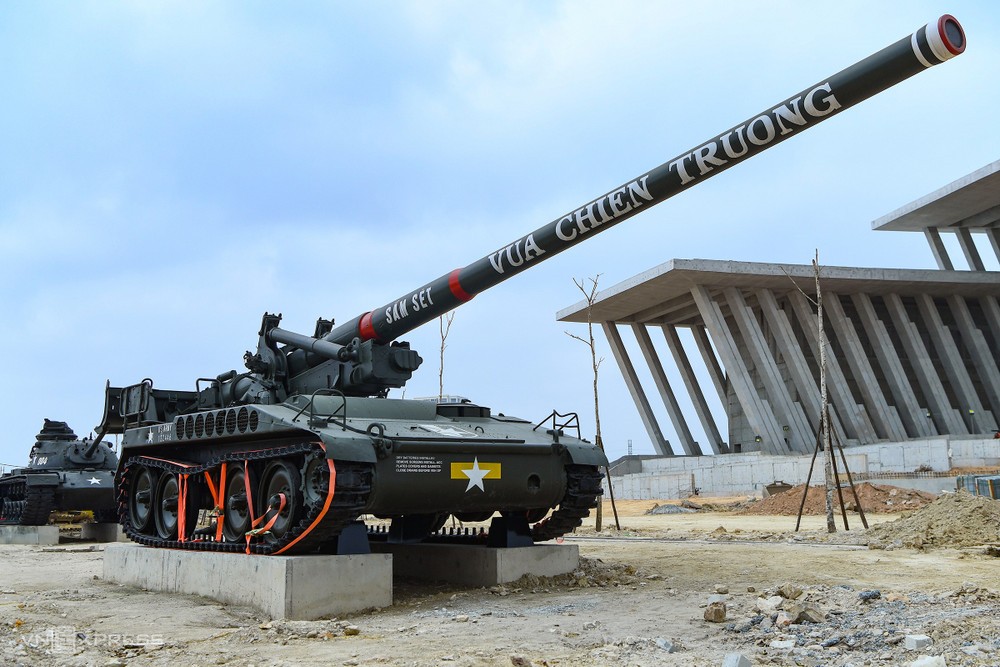
3. Indoor Exhibition Area
The interior of the museum is divided into several thematic exhibition areas, each focusing on a specific historical period, allowing visitors to gain a comprehensive understanding of Vietnam’s struggle for independence.
Main Themes in the Exhibition Area:
- Theme 1: The Early Period of Nation Building and Defense: Exhibits from the Hùng Kings era to the early resistance wars, showcasing the spirit of patriotism and national defense from ancient times.
- Theme 2: Protecting Independence from 939-1858: Reflecting efforts to safeguard independence over centuries, featuring valuable documents and artifacts.
- Theme 3: Resistance Against French Colonialism, Gaining National Independence from 1858-1945: Exhibits, documents, and images about the resistance against the French, highlighting the nation’s resilient spirit.
- Theme 4: Resistance Against French Colonialism from 1945-1954: Recreating the glorious victories and sacrifices of soldiers during the resistance.
- Theme 5: Resistance Against America from 1954-1975: Showcasing significant artifacts from the American resistance, including the iconic MiG-21 fighter jet “Silver Swallow,” which is displayed as if it is flying to protect the nation’s airspace.
- Theme 6: Building and Defending the Country from 1976 to Present: Reflecting the process of nation-building and development after the war, with important artifacts and documents.
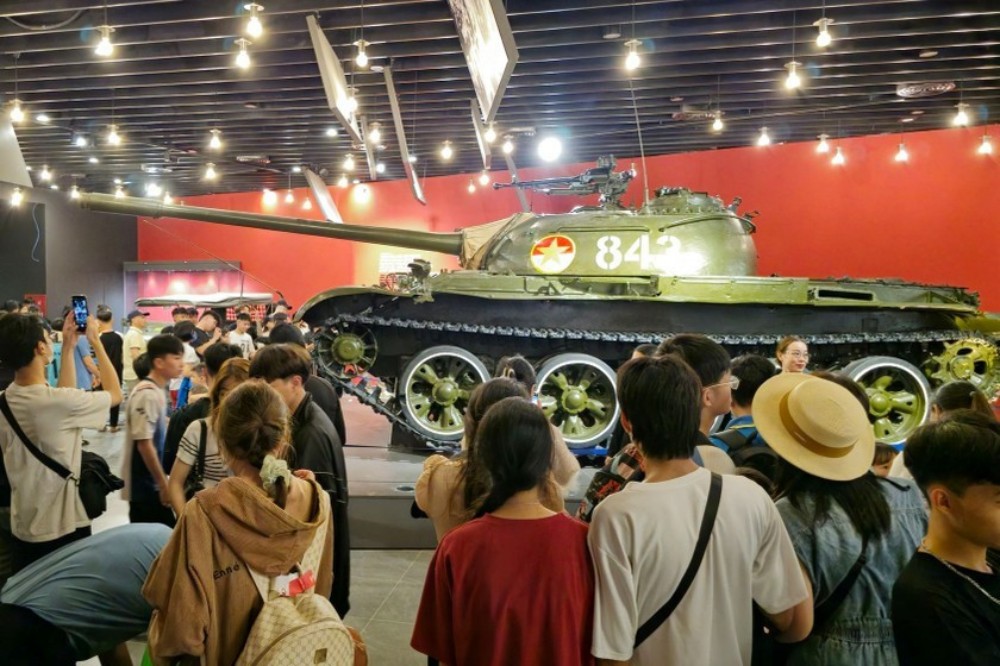
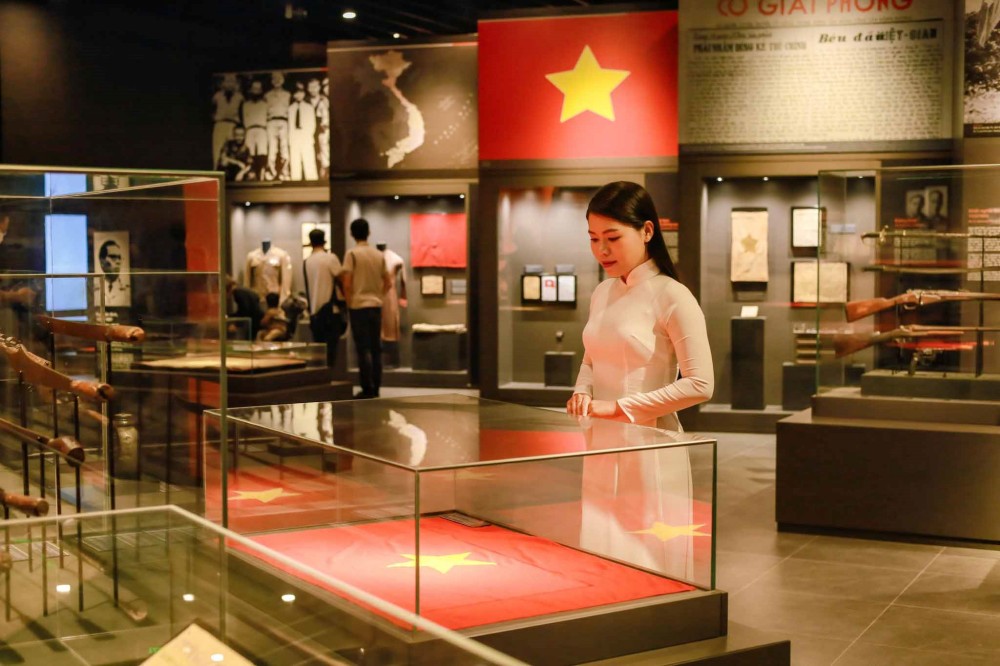
4. Modern Technology
The Vietnam Military History Museum embraces modern technology to enhance visitors’ experiences. Innovative methods include:
- 3D Mapping Technology: This technology vividly recreates historical battles.
- Information Retrieval Screens and Audio Guides: These provide detailed information about artifacts and historical events, enriching visitors’ understanding.
- QR Codes: Visitors can scan codes to quickly access information about specific artifacts.
- VR 360 Technology: This feature allows visitors to experience the museum from home through the YooLife platform, enabling them to explore exhibition areas interactively.
5. National Treasures
The museum proudly displays four national treasures, including:
- MiG-21 fighter jet, serial number 4324
- MiG-21 fighter jet, serial number 5121
- T-54B tank, serial number 843
- Map of the Battle Plan during the Ho Chi Minh Campaign
These treasures not only hold historical significance but also symbolize the resilient fighting spirit of the nation.
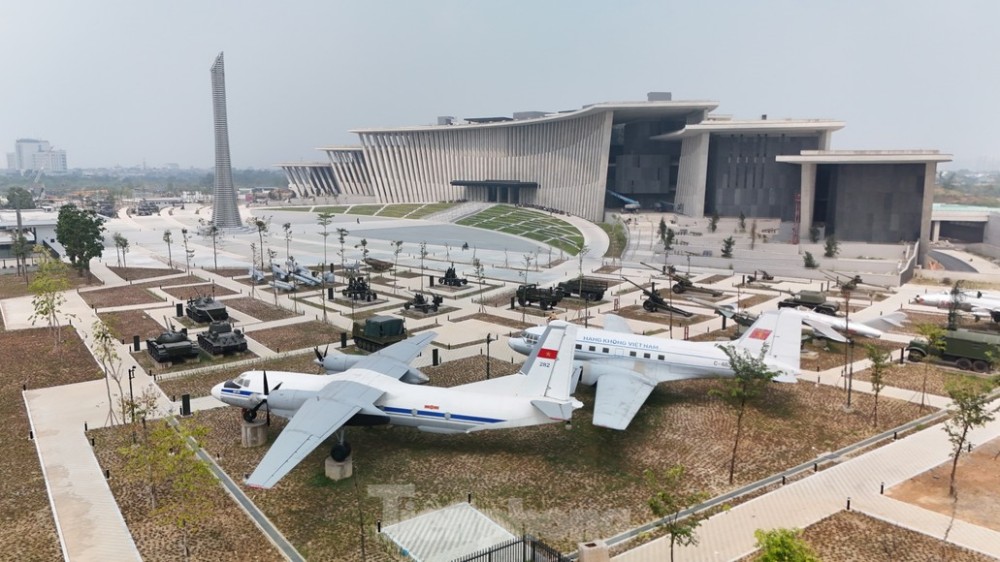
Conclusion
The Vietnam Military History Museum is a thoughtfully designed space that provides depth and richness, serving as both a showcase for historical artifacts and a venue for educational and emotional experiences. This museum is an ideal destination for anyone interested in learning about Vietnam’s military history while appreciating the values of peace and independence that past generations fought hard to achieve. Come and explore this meaningful space to gain a deeper understanding of the glorious yet challenging journey of the Vietnamese people!
